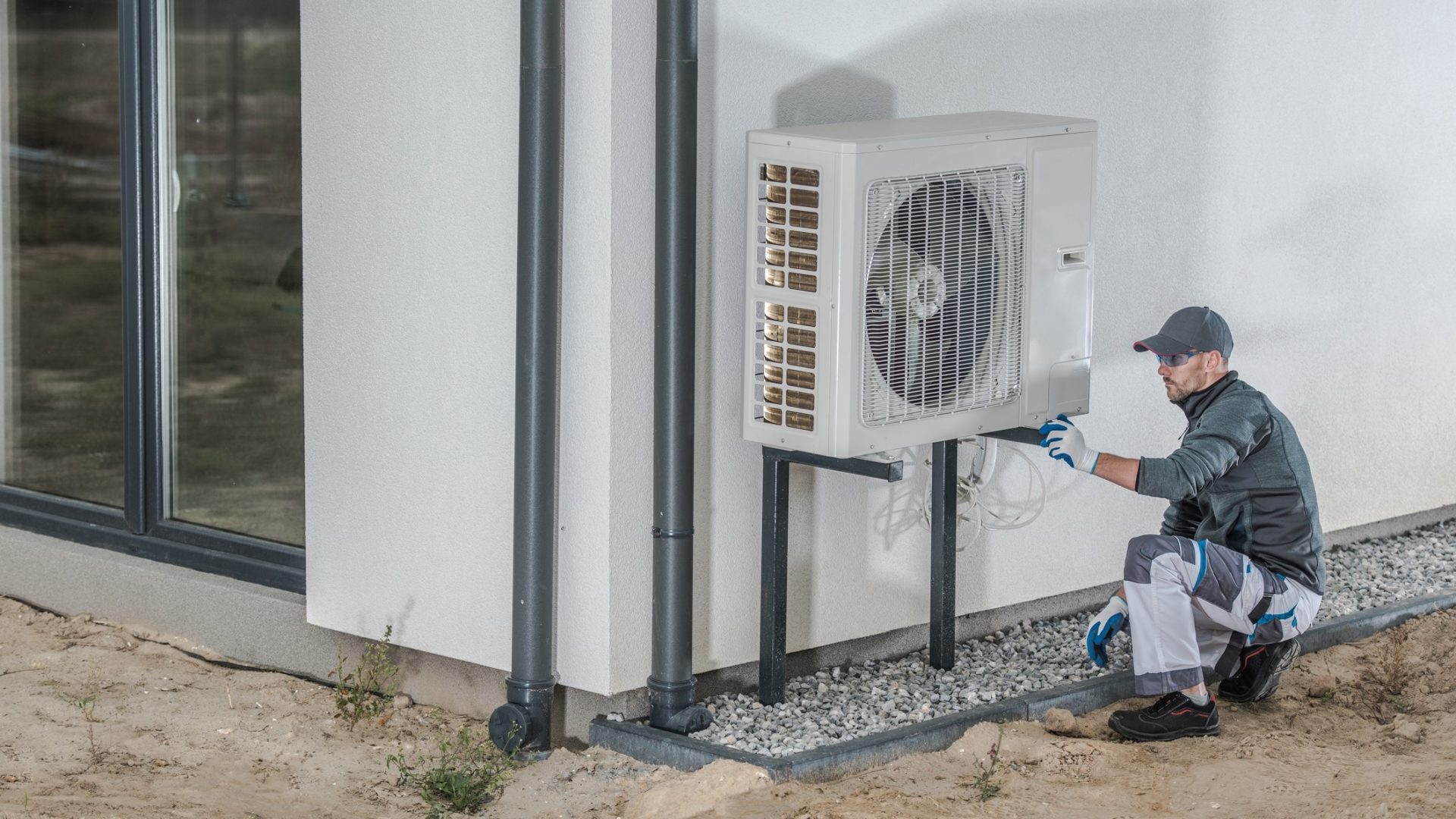New homes are being designed to be fit for a low-carbon future. But what about existing homes? Chris Paul and Hannah Giebus examine the barriers to retrofit investment, the grants and incentives and what the government will need to do to build an effective retrofit market.

The Future Homes Standard (due to come into effect in 2025) will provide a step-change in the way new homes are built, with 75-80% less carbon emissions than homes built to current standards. While that will make new homes fit for our low-carbon future, it also puts increasing focus on the performance gap between new and existing homes. The retrofit market remains one of the biggest challenges to address if the UK is to meet its Net Zero 2050 target.
Retrofitting domestic properties will involve a range of measures, either delivered through incremental investment over time (e.g. replacing appliances with more efficient models and replacing gas boilers with heat pumps) or as part of a planned whole-house retrofit (including major building fabric upgrades, low-carbon heating and on-site energy generation and storage).
While there is significant potential for financed solutions for the retrofit market, there are challenges in creating delivery models that fits different tenure types. It is also important to balance the needs of funders (in terms of security) against the need for balanced documents that homeowners and tenants will want to sign. Complex documents that require significant clarification will act as a barrier to roll-out and increase delivery costs.
Who foots the bill?
A key challenge for private and social landlords is how to address the split incentive – where the landlord pays for the upgrade, but the tenant gets the benefit through increased comfort and reduced bills. Given the level of retrofit work that is required, many landlords are looking at models that require the tenant to contribute to the cost, whether through an increased “warm rent” (ie charging more rent for an energy efficient home) or a separate service payment for bundled heating or comfort services alongside the rent.
The risk with any separate payment is tenant default. As the majority of retrofit investment is not demountable, it is difficult to address non-payment. While there may be contractual remedies (eg non-payment resulting in termination of the supply of discounted on-site generated electricity), these are unlikely to provide much comfort and eviction remains a last resort. Where retrofit investment is externally funded, it is likely that funders will want landlords to stand behind any tenant payments, which creates significant risk for the landlord entity.
There is a general concern about the cost of whole-house retrofit. Part of the issue is the need to create the pipeline to allow the economies of scale necessary to bring down the cost. This isn’t just an issue for landlords with older stock, as most current properties being acquired under s.106 deals will themselves need to be upgraded before 2050. This risks creating a real bottleneck for the retrofit market, further increasing delivery costs.
Changing incentives
The shifting nature of energy efficiency policy makes it more difficult to plan retrofit programmes and create funded models. Following the launch of the Energy White Paper in December 2020, we await details on the key elements that are likely to impact the built environment. In particular, we expect the ‘Heat and Building Strategy’ to set out the necessary steps towards the decarbonisation of heat in domestic and non-domestic buildings. Uncertainty about the scope and nature of government support risks discouraging homeowners and landlords from taking the initiative, particularly if there is the suggestion of additional grants or incentives in the pipeline.
“The shifting nature of energy efficiency policy makes it more difficult to plan retrofit programmes and create funded models.”
An additional £300m has been allocated to the Green Homes Grant Local Authority Delivery scheme, which allows councils to bid for funding to carry out retrofits within low-income households. This replaces the flagship Green Homes Grant scheme for homeowners, which was scrapped in March 2021 after poor uptake (only achieving 6% of its target to help 600,000 households switch to renewable energy). A further £60m of funding has been committed to help upgrade social housing stock currently below EPC ‘C’ standard for the next phase of the Social Housing Decarbonisation Fund. The Government has also committed to increase the Energy Company Obligation fund to £1bn per year from 2022, with an intended focus on insulating the worst quality homes.
Still to come is the Clean Heat Grant, which will replace the Domestic Renewable Heat Incentive in April 2022. Proposals under the consultation include minimum insulation requirements, biomass boilers restrictions, a voucher application process and eligibility for existing buildings and ‘custom-built’ homes only. The government is already ramping up the minimum energy efficiency standards for private rented properties and we can expect similar targeted legislation across sectors as we move towards the 2050 target.
The scale of the retrofit challenge is huge. According to the Committee on Climate Change’s report on UK housing, almost all the UK’s 29 million homes will need to be retrofitted to meet the Net Zero 2050 target. That presents a significant opportunity for the construction sector, but clear and consistent government policy is critical to help develop the necessary supply chains.
Chris Paul is a partner and Hannah Giebus is a solicitor at Trowers & Hamlins.
Comments
Comments are closed.












Somewhat rental sector focused and does not address the enormous problems facing homeowners, many already mortgaged to the hilt or asset rich-cash poor. A government that pours out ‘policies’ whilst almost totally failing on the strategy and plans (or withdraws them at short notice) and prone to u-turns on anything that appears less than popular seems unlikely to anything meaningful for some years yet. Disasters await.
And what about listed buildings? The current advice from historic planning officers includes ‘wearing thick sweaters’ and ‘closing the shutters all the time’. There is a train crash of priorities coming down the line with an extraordinary conflict of outdated and volatile opinions versus an inevitable need to upgrade to protect the continued usage of these old buildings.
What can one say? The whole ‘2050’ target is typical of the ‘fairyland’ world that politicians seem to inhabit, and somewhat akin to deciding to build Heathrow before anyone has invented the aeroplane !
Brian Collins, 10 June 2021
If you have a house with an EPC of C or better it is very unlikely that any energy upgrade would be financially viable without Government subsidy. Also all solid wall houses will need a subsidy for insulation.
Totally agree with Tony Wills about upgrading listed buildings. There is a huge disconnect between different government departments and we need some joined up thinking please.
Mike & Tony – very good comments, thank you!
So let’s get this right, we will use energy to retro fit building for LESS energy use – Yeah right.
The “net zero” dream is going to ruin peoples lives and businesses and have a huge impact (increase) in energy costs, not to mention many beautiful old buildings that might suddenly be deemed “unacceptable” and demonlished to make way for a “zero carbon” monstrosity.
A perfect example of what could happen is Glasgow where, after WW2, city “planners” destroyed many thousands of decent and beautful buildings (and the communities in them) that could have been upgraded, in a fit of wanton vandalism – Hutchesontown E is a great example of the eyesores they came up with. Don’t believe me – check out some old photos and then look at the same places today – scandalous and shameful!
Wake up to this green “net zero carbon” pipedream. Jobs and businesses are at risk, not to mention the living standards of those who have to live in them. The only beneficiaries will be politicians and their pals – as we have already seen this last year!
Not everyone lives in a 3 bed detached in some leafy suburb! The repercussions of all this misguided nonsense and virtue signalling for the likes of tenement and high rise dwellers are horrific!
In response to the comment on poor uptake on the Green Homes Grant for home owners. This was down to inaccessibility due to red-tape when people applied for the grant and many limitations to who could apply.
The 2050 Target for Nett Zero seems a long way in the future from 2021 – 30 years ago
Rather like the “Zero Defects” campaigns by CIC and others ………………
“Clients used to providing a high level of service for their own customers are often dismayed by the high level of defects on building projects in which they have invested heavily” (Constructing Improvement, Construction Clients’ Forum, January 1998)
……………… approx 30 years ago ( In Memoriam – Grenfell 4 years ago)
I think i would start with one simple change. Why is there VAT on insulation?!
Removing that would reduce the cost of retrofit.